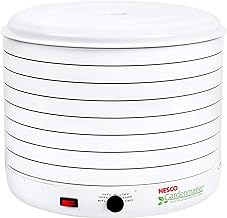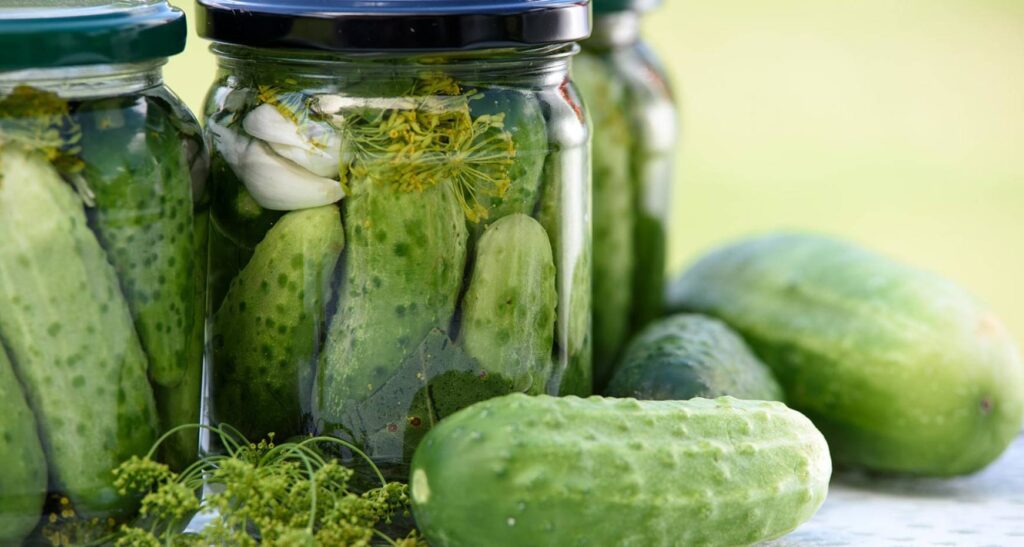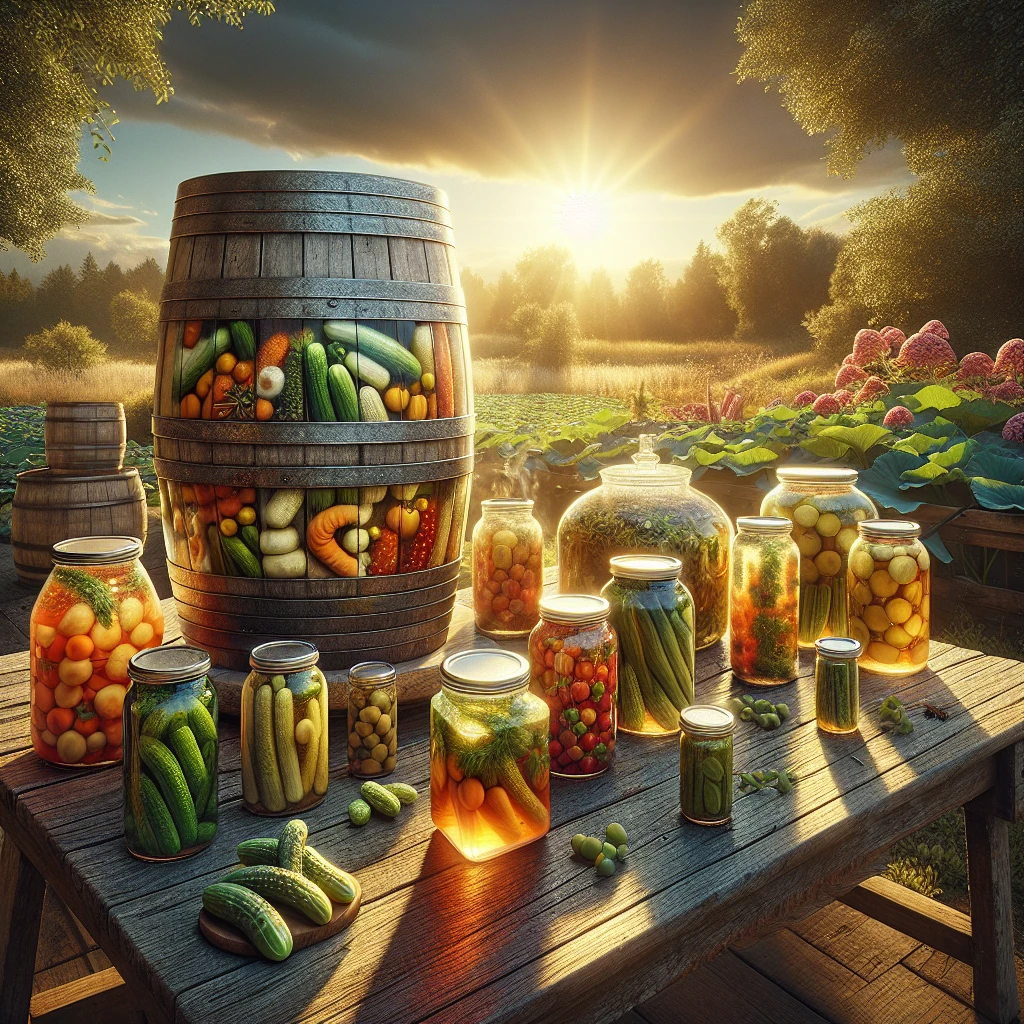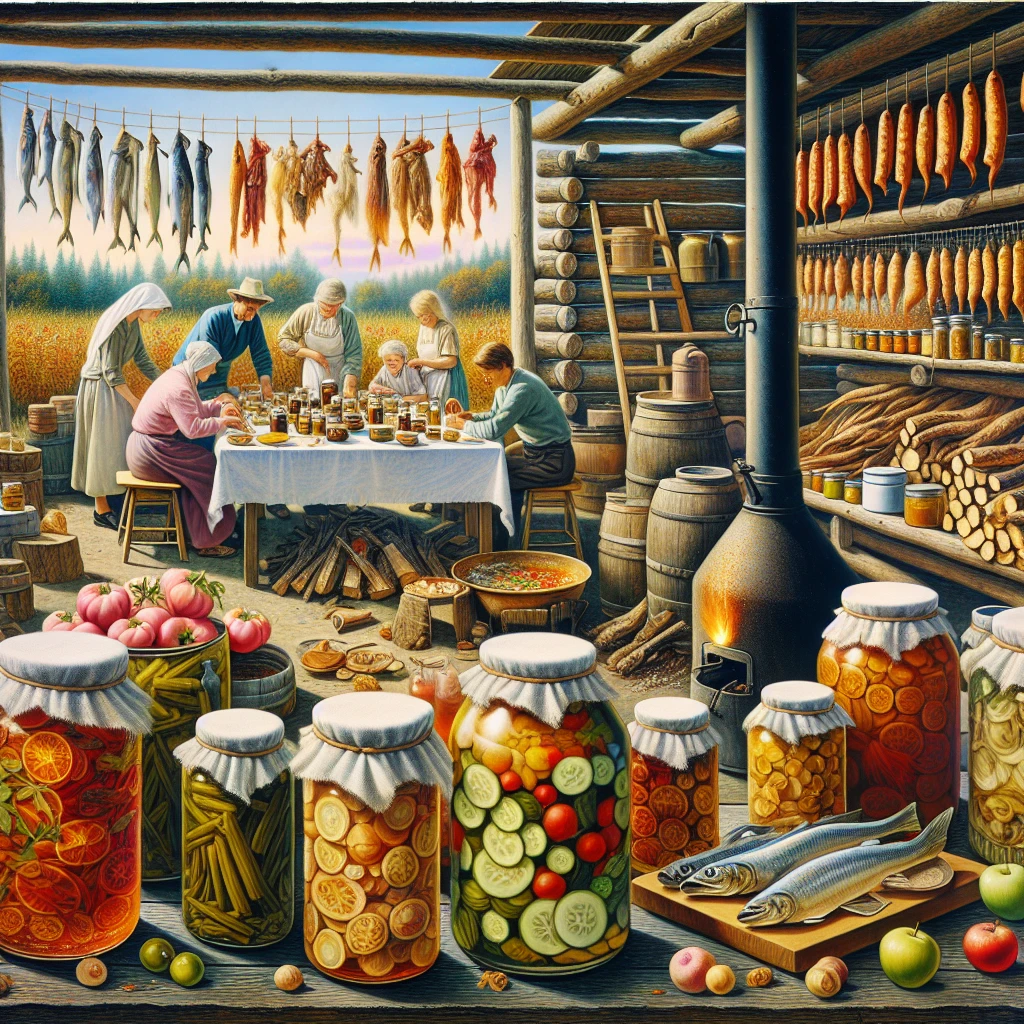

Preserving food outdoors is important for ensuring food security and minimizing food waste, especially in areas where access to refrigeration or electricity is limited. In this article, we will discuss four easy methods for preserving food outdoors, providing practical solutions for individuals and communities facing challenges in food preservation.
These methods include sun-drying, smoking, pickling, and fermenting, offering a variety of options for preserving different types of food items.
Check out this Youtube video: “Preserving the Maine Harvest: Dehydrating and Outdoor Food” and learn valuable skills for preserving food outdoors in the wilderness.
Understanding the Importance of Preserving Food Outdoors
The impact of preserving food outdoors on food safety
Preserving food outdoors is crucial for maintaining food safety, as outdoor conditions can expose food to higher risk of contamination and spoilage. Without proper preservation, perishable items are susceptible to unsanitary conditions and the growth of foodborne bacteria, leading to potential food poisoning.
It’s essential to employ effective preservation methods such as drying, smoking, or using airtight containers to mitigate these risks and ensure the safety of consumed food.
The significance of preserving food for longer outdoor trips
Preserving food becomes significantly important for longer outdoor trips, where access to fresh supplies may be limited. Effective food preservation methods help ensure a sustainable food source throughout the trip, reducing the reliance on perishable items.
This not only provides a sense of security but also allows for diverse meal options, improving the overall experience of the outdoor adventure.
Method 1: Drying
Explanation of the drying method for preserving food outdoors
Drying is a method of food preservation that involves removing moisture from the food to prevent bacterial growth and spoilage. It is a popular technique for outdoor food preservation due to its simplicity and effectiveness.
Step-by-step process of drying food
- Prepare your produce by washing and blanching.
- Pat dry the produce to remove excess moisture.
- Slice and cut the food into uniform pieces for even drying.
- Place the food in a food dehydrator, oven, or out in the sun to dry at an optimum temperature of 140°F.
- Monitor the food as it dries and rotate the trays for even drying.
Examples of food that can be preserved through drying
Fruits like apples, pears, and berries, as well as vegetables such as bell peppers, tomatoes, and zucchinis, are excellent candidates for preservation through drying. Additionally, meats like beef or turkey can be transformed into jerky through the drying process.
Method 2: Canning
Explanation of the canning method for preserving food outdoors
The canning method for preserving food outdoors involves sealing food in jars and heating them to kill bacteria. This process creates a vacuum-sealed environment, preventing spoilage and preserving the food for an extended period.
It’s a reliable and efficient way to store food for outdoor adventures.
Step-by-step process of canning food
- Preparation: Gather canning jars, lids, and bands. Wash them thoroughly.
- Filling: Pack prepared food into jars, leaving appropriate headspace.
- Closing: Place lids and bands on jars, ensuring they are securely tightened.
- Processing: Use a water bath canner or pressure canner based on the food type and follow the recommended processing time and pressure.
- Cooling: Allow the jars to cool naturally and check the seals.
Historical facts and statistics about the use of canning for food preservation
- Nicolas Appert, a French inventor, is credited with inventing food preservation through canning in 1809.
- The canning technique gained popularity during war times for providing soldiers with long-lasting provisions.
- According to historical statistics, the invention of canning was a significant breakthrough in food preservation, revolutionizing the way food was stored and transported.
| Year | Event |
|---|---|
| 1809 | Nicolas Appert invents food preservation through canning |
| 1810 | Peter Durand patents the use of tin-coated iron cans for food preservation |
Method 3: Pickling
Explanation of the pickling method for preserving food outdoors
Pickling is a preservation method involving the use of either anaerobic fermentation in brine or immersion in vinegar. This process helps preserve vegetables and extends the shelf-life of food while maintaining their flavors and nutrients.
Step-by-step process of pickling food
The step-by-step process of pickling food involves selecting the produce, preparing the brine, adding spices, and placing the ingredients in sterilized containers. The produce is then submerged in the pickling brine, allowing the preservation process to take place.
Examples of food that can be preserved through pickling
Cucumbers, cabbage, green olives, capers, garlic, onions, carrots, cauliflower, beans, and various fruits are commonly preserved through pickling. Additionally, pickling can also be used to preserve meats, fish, dairy products, and eggs.
| Foods Preserved Through Pickling |
|---|
| Cucumbers |
| Cabbage |
| Green olives |
| Capers |
| Garlic |
| Onions |
| Carrots |
| Cauliflower |
| Beans |
| Various fruits |
Method 4: Smoking
In preserving food outdoors, the smoking method involves using smoke as a preservative to prevent meat from spoiling. The smoke creates a thin, acidic film on the meat, acting as a natural barrier to spoilage.
Explanation of the smoking method for preserving food outdoors
The smoking method for preserving food outdoors involves exposing the meat to smoke from burning wood chips. This imparts a distinct flavor while also creating an acidic film on the meat’s surface, effectively preserving it and extending its shelf life.
Step-by-step process of smoking food
- Preparation: Trim excess fat from the meat to be smoked.
- Smoking: Place the meat in a smoker and expose it to smoke from wood chips over a low, consistent heat for several hours until it reaches the desired flavor and texture.
- Storage: Once smoked, the meat can be stored in a cool, dry place to maintain its quality and preservation.
Anecdotes or quotes related to the use of smoking for food preservation
“Food smoking was invented as the process of preserving food to avoid shortages.” – The Ancient Art and History of Smoked Food
Best Practices for Preserving Food Outdoors
Tips for choosing the right method based on the type of food
When preserving food outdoors, it’s crucial to match the preservation method with the type of food. For example, dehydrating works well for fruits and veggies, while canning is ideal for meats and soups.
Understanding the specific needs of each food item ensures the preservation method maintains flavor and quality.
Examples of common mistakes to avoid when preserving food outdoors
One common mistake in outdoor food preservation is inadequate sealing, which can lead to spoilage. Another is improper temperature control during preservation, jeopardizing the safety and longevity of the food.
It’s essential to avoid cross-contamination and ensure thorough sterilization of preservation containers to prevent bacterial growth.
Recommendations for storing preserved food during outdoor trips
When storing preserved food for outdoor trips, opt for durable, airtight containers to maintain freshness and prevent contamination. Utilize coolers with ice packs or dry ice for perishable items and store them in a shaded, cool area.
Label all containers with the preservation date and consume the oldest items first to ensure nothing goes to waste.
Overcoming Challenges in Preserving Food Outdoors
Addressing the common challenges faced when preserving food outdoors
To address the common challenges faced when preserving food outdoors, it’s crucial to consider the impact of temperature fluctuations. Warmer temperatures can expedite food spoilage, leading to potential health risks.
Additionally, the lack of refrigeration and exposure to outdoor elements pose significant challenges in maintaining food safety and quality.
Counterarguments to common misconceptions about outdoor food preservation methods
Common misconceptions about outdoor food preservation methods often revolve around freezing, canning, and drying. It’s essential to counter the belief that freezing kills all bacteria, as certain bacteria can still survive under freezing conditions.
Moreover, the misconception that canning preserves all nutrients overlooks the impact of heat exposure on nutrient retention. Similarly, the assumption that drying removes all contaminants disregards the potential for insufficient dehydration to prevent spoilage effectively.
Sustainable Approaches to Preserving Food Outdoors
Discussion of sustainable and eco-friendly practices for preserving food outdoors
When it comes to sustainable and eco-friendly practices for preserving food outdoors, one effective method is dehydration. By removing moisture from food, it not only extends its shelf life but also reduces the overall weight, making it easier for outdoor enthusiasts to carry.
Another approach is fermentation, which not only preserves food but also enhances its nutritional value. It’s a natural way of preserving food without relying on artificial additives.
Additionally, utilizing reusable and biodegradable packaging for food storage contributes to sustainable practices, reducing the environmental impact of outdoor food preservation.
Examples of traditional methods of preserving food that are sustainable
Traditional methods of preserving food offer sustainable solutions for outdoor enthusiasts. For example, pickling vegetables is a classic method that allows individuals to store produce for extended periods without the need for refrigeration.
Smoking, an ancient preservation technique, not only imparts a unique flavor to meats and fish but also acts as a natural preservative, extending the food’s longevity. Another traditional method is curing, which involves treating food with salt to draw out moisture and inhibit bacterial growth, ensuring long-term preservation.
These time-tested approaches not only align with sustainable principles but also contribute to the rich heritage of outdoor food preservation.
Exploring New Methods and Technologies for Preserving Food Outdoors
Overview of modern technologies and innovative methods for preserving food
In today’s world, food preservation has evolved to encompass various modern technologies and innovative methods. From traditional refrigeration and freezing to cutting-edge techniques like isochoric freezing and high-voltage atmospheric cold plasma, there’s a wide array of options available for preserving food outdoors.
Examples of advancements in outdoor food preservation techniques
Advancements in outdoor food preservation techniques have revolutionized the way we store and maintain food during outdoor adventures. For instance, methods such as sun-drying, oven-drying, microwaving, and dehydrating have made it easier to reduce food’s weight and volume, making it more convenient for outdoor activities.
Additionally, using technologies like nanotechnology has allowed for advanced preservation of fruits, vegetables, beverages, and spices, ensuring that outdoor enthusiasts have access to nourishing and safe food options.
Ensuring Food Safety When Preserving Food Outdoors
Importance of food safety measures during the preservation process is paramount to prevent foodborne illnesses and ensure the quality of preserved food. In outdoor settings, the risk of contamination and spoilage increases, making it crucial to adhere to stringent safety measures.
Recommendations for maintaining food safety standards during outdoor food preservation activities
- Utilize a calibrated thermometer to verify proper cooking temperatures and cold storage conditions.
- Keep perishable foods refrigerated until needed or in a cooler with sufficient ice or ice packs to maintain cold temperatures.
- Separate raw foods like meat, poultry, and seafood from other raw foods to avoid cross-contamination during storage and handling.
- Promptly refrigerate or freeze perishables within 2 hours of cooking or purchasing to prevent bacterial growth.
- Avoid leaving coolers in direct sunlight, keeping them shaded with lids closed, and refraining from leaving food in hot vehicles to maintain safe temperatures.
- Plan ahead and pack foods in coolers with proper insulation and “cold retention” capabilities to ensure prolonged safety.
- Refrigerate or freeze food the day before packing it in a cooler, and keep the cooler in the coolest possible location for extended freshness.
Recommended Amazon Products for Preserving Food Outdoors
Here’s a curated list of products that can help you achieve the goal of preserving food outdoors with ease. These recommendations are based on functionality, price, and reviews.
Food Dehydrator
A food dehydrator is an essential tool for the drying method of preserving food outdoors. It efficiently removes moisture from fruits, vegetables, and meats, allowing you to store them for extended periods. The NESCO Food & Jerky Dehydrator is a top-rated dehydrator that offers consistent results and has received excellent reviews for its performance.


| Pros | Cons |
|---|---|
| Efficient drying process | Takes up counter space |
| Easy to use | Can be noisy |
| Versatile for various foods | Initial investment |
Canning Kit
For the canning method of preserving food outdoors, a complete canning kit is essential. The Ball Complete Canning Kit is highly recommended due to its quality and comprehensive set of canning tools. It includes a water bath canner, jar rack, jar lifter, and essential canning accessories for safe and easy home canning.


| Pros | Cons |
|---|---|
| Complete set of canning tools | Requires storage space |
| Easy to handle and use | Initial learning curve |
| Durable and long-lasting | Additional jars needed for large batches |
Pickling Kit
To embark on the pickling method for preserving food outdoors, a pickling kit is a convenient choice. The Masontops Pickle Pipe Pickling Kit is a popular option, known for its simplicity and effectiveness. This kit includes silicone fermentation airlocks and glass fermentation weights, making the pickling process hassle-free.


| Pros | Cons |
|---|---|
| Easy fermentation process | Limited to small batches at a time |
| Simplifies pickling in mason jars | Requires additional jars |
| Durable and reusable equipment | Limited accessories in the kit |
Smoker
For preserving food outdoors through smoking, a high-quality smoker is essential. The Masterbuilt Digital Electric Smoker is a top-of-the-line choice, offering precise temperature control and consistent smoke production. Its user-friendly features and large cooking capacity make it ideal for smoking a variety of meats and fish.


| Pros | Cons |
|---|---|
| Precise temperature control | Requires power source |
| Large cooking capacity | Not portable for some outdoor activities |
| Easy to clean and maintain | Higher initial cost |
Top Recommended Product for Preserving Food Outdoors
If you’re looking for the best solution for preserving food outdoors, we highly recommend the NESCO Food & Jerky Dehydrator. This top-rated dehydrator offers consistent drying results, ease of use, and versatility for various foods. Ready to improve your outdoor food preservation experience? Check out the NESCO Food & Jerky Dehydrator today for the best results!




Conclusion
The 4 easy methods for preserving food outdoors include dehydration, canning, pickling, and smoking. These methods allow for longer shelf life and safe consumption of food during outdoor activities, such as camping, hiking, and picnics.
It is important to preserve food for outdoor activities to ensure a fresh and safe food supply, especially when refrigeration is not readily available. By preserving food, outdoor enthusiasts can also reduce food waste and save money on purchasing pre-packaged meals.
I encourage all readers to try the discussed methods for their next outdoor adventure. Experimenting with food preservation can enhance the overall experience and provide a sense of independence and self-sufficiency while enjoying the outdoors.









